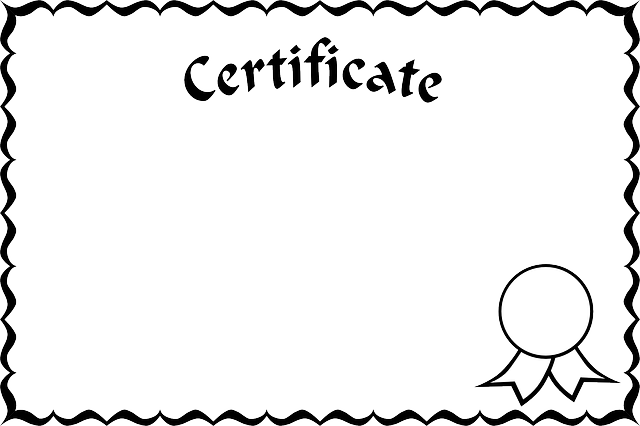
Table of Contents

A day in the life of the HR Manager
According to The United States Bureau of Labor Statistics, as of April 2022, 71.6 million employees separated from employment while 78.0 million new hires were added in the previous fiscal year. Finding the best Human Resource for each opening requires a lot of effort and patience on the part of the Human Resources Manager.
The Role of the Human Resource Manager
A Human Resources Manager has an important role in the development of organizational culture. These services facilitate communications between managers and employees and aid in settling conflicts. The HR Manager also works with department managers to monitor talent and ensure employee delivery of the highest value. The Human Resources professional may provide training materials and workshops when required to enhance employee’s engagement, address workplace issues, modify hr policies or workplace policies. They spend time working with new technologies and new challenges and address workplace disparities.
The skills of effective human resource management
Human Resources Managers learn new technologies to help companies recruit talented employees and achieve their goals. Certain skills are considered essential to effective Human Resource Management. Sometimes just getting out on the floor to talk with employees and managers is a key role that is important to the development of a good working relationship in the industry. Listening and communication is a good way to get informal advice from people by just walking around the office.
A typical day in the life of a Human Resource Manager (HR Manager) may involve meeting with the HR team, employees and department managers to discuss concerns, conducting performance reviews, help design work activities, develop new employee training and benefits programs, labor contracts, and more. Human Resources Software is a great help in managing the department.
People are more than a Human Resource
HR is more than filling out forms and boxes. No company can survive without people and your HR role is crucial in making decisions and filling job positions which will help the business prosper and maintain a positive growth rate.

You can be a generalist or a specialist
The HR role can be a challenge and involves a number of aspects, from payroll to recruitment, working with colleagues, other businesses in the industry and HR support.
One of the most important aspects of being an HR Manager is staying up to date with the latest changes in legislation, technology and best practices. This can be achieved through taking relevant courses and keeping abreast of developments in the industry.
What’s the average work day like?
Typically, “a day in the life of an HR manager” starts early in the morning, at 8:30 am. Most days begin with coffee meetings with potential clients, projects, research and drafting proposal preparation. Some tasks include writing employee engagement handbooks or drafting simple policy, facilitating training workshops or talking to leaders to learn about strategies and ideas.
In very large corporations, such as multinational companies, a Human Resources Director will oversee and coordinate hr strategies with local on-site Human Resource Managers. For either local HR Mangers or the Human Resources Director, the day will usually end late.
What is the best part about working in Human Resources?
Having a career within HR can be one of the most rewarding jobs. Having the opportunity to work in various project areas across various industries is one benefit. HR Professionals enjoy working across organizational levels providing support from junior teams to CEOs. HR helps senior management showcase their abilities in front of teams of senior managers and their customers. Having a natural curiosity and a love for learning about how organizations work – why they are so effective and why they should be more effective – is an advantage.

What are the downsides of the job?
A few executives over the past few years have expressed a disbelieve in HRs credibility and commercial value. Some think HR just attends meetings and focuses on soft skills and communication. They incorrectly believe HR is simply a tool to “protect” the business by preventing the activities of people in their own right or simply to give people advice and support. Most challenges in business nowadays have people involved. Having the right people with the right knowledge or skill on certain projects is key. Sometimes Personnel Managers need to send people off to take a course to gain the knowledge they need for their job. This is called “upskilling” and training and development is a key part of demonstrating leadership. HR professionals also give an insight to different departments by translating the impact that the people have on profit centers.

How does one get into a career in Human Resources?
A background in business is a good start. It is assumed by most experts in the field that a person can be hired after acquiring some qualifications. When first starting out on the Human Resources track, candidates typically first work administrative roles and for recruitment agencies. These roles can spark an interest in the field.
To break into the Human Resource or Human capital fields many people start out majoring in Human Resources in either their Bachelor’s Degree or their Master’s Degree. There are many good programs around the United States where students can Major in the human capital fields if that is the career path they want to follow. Many HR Managers have started out searching for HR Manager Jobs in their area and then volunteering as an intern to gain experience and exposure to the field to see if they like it or not.
HR Professional Certifications
There are a number of different certifications that an HR Manager can get, depending on their area of specialization. For example, those specializing in recruitment may choose to get certified through the National Recruitment Federation, while those specializing in employee relations may choose to get certified through the Society for Human Resource Management. There are also a number of general HR certifications that can be beneficial for any Human Resource Manager, such as the Certified Human Resources Professional designation offered by the Human Resources Professionals Association. No matter what area of HR you specialize in, getting certified can help you to stand out from the crowd and show potential employers that you are serious about your career.

The SHRM-CP certification is for individuals that perform general HR/HR-related duties; or for those pursuing a career in Human Resource Management. The certification covers topics such as HR operations and compliance, workforce planning and employment, employee relations and engagement, and learning and development. Those with the SHRM-CP designation show that they have the knowledge and skills necessary to perform effectively in an HR role.
The PHR certification is for individuals that specialize in employee relations, compensation and benefits, recruiting and staffing, human resource information systems (HRIS), or global/international human resources. The certification covers topics such as employment law, workplace diversity, performance management, and total rewards.
Getting qualified gives you a competitive edge in the Human Capital arena
Experience makes for the best educator, but the right qualification can improve your career. While Rachel has years of experience in HR and a degree in business, she recognizes when she seeks a job, that employers generally require candidates who are skilled in HR skills. As competition grew, she knew she had to pursue supplementary studies which were complementary to her existing degrees. BSB 50618 – Diploma in Human Resources management was delivered online during her 40’s,” she said.

Candidate Evaluation Form
The Candidate Evaluation Form is used by employers to assess the suitability of a candidate for a position. It covers a wide range of topics, including work experience, education, skills, and personality traits. The form is designed to help employers identify whether a candidate has the potential to be successful in the role they are applying for.
The 9-Square Evaluation Form is a tool used by employers to assess a candidate’s suitability for a position. It covers nine different areas, including work experience, education, skills, and personality traits. The form is designed to help employers identify whether a candidate has the potential to be successful in the role they are applying for.
COBRA Notices and Forms
COBRA insurance is a type of health insurance that helps employees and their families maintain their health insurance coverage when they lose their jobs or have a change in employment status. COBRA stands for the Consolidated Omnibus Budget Reconciliation Act, which is a law that requires employers to offer continuation of coverage to employees and their families under certain circumstances. COBRA insurance can be expensive, but it is often the only option for employees and their families who need to maintain their health insurance coverage. Cobra allows an employee to continue with their existing insurance carrier and receive the same benefits they were receiving at their former job. In order to be eligible for COBRA, an employee must have been working for a company with 20 or more employees and must have had health insurance through their employer.
Compensation & Reimbursement
Compensation and reimbursement are two important concepts in the world of human resources. Compensation refers to the process of providing financial rewards to employees in exchange for their work. This can take many forms, such as salaries, bonuses, and commissions. Reimbursement, on the other hand, is the process of providing employees with reimbursement for expenses they may incur at work, such as travel or training expenses. Both compensation and reimbursement are important tools that can help to attract and retain employees. These policies are usually outlined in the Employee Handbook.

HR Self-Assessments
Self-assessment is a process through which individuals reflect on their own performance and identify areas in which they can improve. It is an important tool for professional development and can be used to assess progress over time. HR self-assessments are designed to help employees reflect on their own performance in the workplace and identify areas in which they can improve. These assessments can be used to assess progress over time and identify development goals. Self-assessments are an important part of the development process and can help employees to identify their strengths and weaknesses.
New Hire & Recruitment
The process of recruiting and hiring new employees is a crucial part of any organization. The goal of the recruitment process is to find individuals who are qualified and suitable for the positions that need to be filled. The first step in the recruitment process is to identify the needs of the business. Once the needs have been identified, the next step is to identify the sources of potential candidates. Job descriptions are usually developed and circulated. Candidate sources can include job boards, online databases, and recruitment agencies. Internal candidates can be found through internal bulletin boards which are great for employee focused business communications. The next step is to screen the candidates to identify the most qualified individuals and those who best fit the job descriptions. A perfect fit is sometimes not possible but managers with good leadership skills can usually help new hires overcome any deficiencies. The final step in the recruitment process is to offer the position to the candidate who is the best fit for the organization. New hire orientation is the process of providing new employees with information about the organization and their job duties. This orientation can be conducted in a group setting or on an individual basis. New hire orientation is an important part of the onboarding process and can help to ensure that new employees are properly acclimated to their new roles.

Performance Reviews
Performance reviews are an important part of the HR process and to maintain friendly Labor Relations. They help managers identify areas where employees need improvement and set goals for the future. Additionally, performance reviews can help to identify top performers who may be eligible for promotions or raises. To conduct an effective performance review, HR professionals should first gather input from the employee’s supervisor. Next, they should meet with the employee to discuss the feedback and set goals for the future. Finally, they should document the review and hr metrics developed so that it can be used as a reference in the future. When Labor Unions are part of the business landscape, performance reviews have a role in Labor Relations but direct Union-Management negotiation plays a major part. Since union contracts can be quite lengthy, Labor Relations Specialists take center stage.
Personnel Information
Personnel information is any data or information that relates to an individual employee. This can include personal information, such as name, address, and date of birth, as well as professional information, such as job title and salary. Personnel information is important for HR professionals in order to manage employee records and track employee performance. Additionally, this information can be used to identify trends in the workforce and to make decisions about hiring and promotion. Personnel information is typically stored in an employee database or HRIS system. This information can be accessed by authorized individuals, such as HR professionals and managers.

Reporting Injuries, Incidents & Illnesses
Employers are required to report certain workplace injuries, incidents and illnesses to the Occupational Safety and Health Administration (OSHA). These reports must be made on the OSHA 300 log and the OSHA 300A summary. The purpose of these logs is to track workplace safety and health information. This information can be used to identify trends and hazards in the workplace. Additionally, this information can be used to develop and implement safety programs. Employers are required to post the OSHA 300A summary in a common area so that employees can see it.
Discrimination & Harassment
Discrimination and harassment are prohibited in the workplace. Discrimination is defined as treating someone differently based on their protected status. Protected status can include race, color, national origin, sex, religion, age, and disability. Harassment is defined as unwelcome comments or behaviors that are based on a person’s protected status. Discrimination and harassment can create a hostile work environment and can lead to legal action. To prevent discrimination and harassment in the workplace, employers should develop policies and procedures. These policies should be communicated to all employees and enforced consistently. Additionally, employers should provide training on discrimination and harassment so that employees are aware of what is prohibited.
Equal Employment Opportunity
The Equal Employment Opportunity Commission (EEOC) is responsible for enforcing federal labor law that prohibit discrimination in the workplace. These labor laws protect employees from being treated differently based on their protected status. Protected status can include race, color, national origin, sex, religion, age, and disability. The EEOC investigates complaints of discrimination and takes legal action against employers who are found to have violated the law. Additionally, the EEOC provides training and education on discrimination in the workplace. Employers can contact the EEOC to learn more about their obligations under the law.

Workplace Safety
Workplace safety is important for preventing injuries, illnesses, and deaths. To ensure a safe workplace, employers should develop policies and procedures. These policies should be communicated to all employees and enforced consistently. Additionally, employers should provide training on workplace safety so that employees are aware of the dangers in the workplace and how to prevent them. Some common workplace safety hazards include slips, trips, falls, electrical hazards, and chemical hazards. By taking steps to prevent these hazards, such as holding a weekly safety meeting, employers can create a safer workplace for everyone.
Employee Benefits
Employee benefits are an important part of the overall compensation package that employers offer to employees. Some common employee benefits include health insurance, life insurance, and retirement savings plans. Employees value these benefits and often consider them when making decisions about their employment. Therefore, it is important for employers to offer a competitive benefits package. Additionally, employers should communicate the details of the benefits package to employees so that they are aware of what is available to them.

Employee Handbook
The employee handbook is a document that contains information about the employer’s policies and procedures. It is important for employers to develop an employee handbook so that employees are aware of the expectations and rules of the workplace. The employee handbook should be reviewed with all new employees and should be made available to all employees on an ongoing basis. Additionally, the employee handbook should be updated as needed to reflect changes in the workplace.
Sexual Harassment (Other Harassment)
Sexual harassment is a type of discrimination that is prohibited by law. Sexual harassment can include unwelcome comments or behaviors that are based on a person’s sex. Sexual harassment can create a hostile work environment and can lead to legal action. To prevent sexual harassment in the workplace, employers should develop policies and procedures. These policies should be communicated to all employees and enforced consistently. Additionally, employers should provide training on sexual harassment so that employees are aware of what is prohibited.
Termination Forms
Employee termination is the process of ending an employee’s employment with the company. There are several reasons why an employer might choose to terminate an employee, including poor performance, misconduct, and layoffs. When terminating an employee, it is important for employers to follow the procedures outlined in their policies and procedures. Additionally, employers should document the reasons for the termination and provide the employee with a termination form. The termination form should include information about the employee’s rights and benefits.

Vacation & Time Off
Vacation and time off are important for employees to recharge and enjoy time with family and friends. To ensure that employees can take the time off they need, employers should develop policies and procedures. These policies should be communicated to all employees and enforced consistently. Additionally, employers should provide training on vacation and time off so that employees are aware of the procedures and their rights.
Employees are entitled to time off from work for a variety of reasons. Some employees may take time off to care for a family member, while others may take time off to deal with their own personal health issues. Additionally, employees may take time off to observe religious holidays or take vacation. Employers should have policies and procedures in place for managing employee time off. These policies should be communicated to all employees and enforced consistently. Additionally, employers should provide training on the policies so that employees are aware of their rights and responsibilities.
Compliance Posters
The HR compliance posters are a must-have for any business. They help to ensure that employees are aware of the company’s policies and procedures regarding a variety of topics, such as discrimination, harassment, and retaliation. Additionally, posters can help to remind employees of their rights and responsibilities under the law.